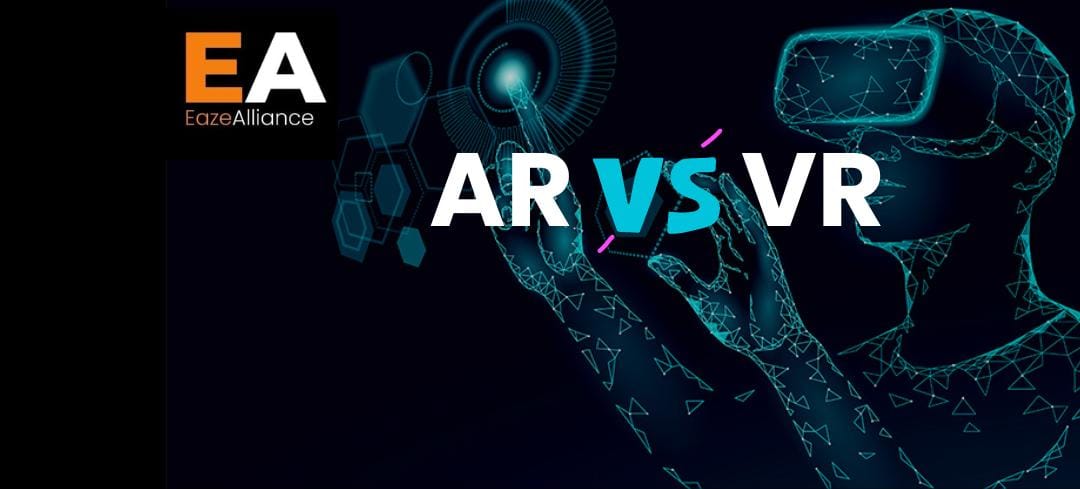Augmented Reality (AR) and Virtual Reality (VR)
 Eazealliance
Eazealliance 
In the rapidly evolving landscape of technology, Augmented Reality (AR) and Virtual Reality (VR) are not just buzzwords but are shaping the future of digital experiences. As we move further into 2024, these immersive technologies are making significant strides, influencing various sectors from gaming and education to healthcare and beyond. This article explores the latest advancements in AR and VR, their transformative applications, and what the future holds for these revolutionary technologies.
1. AR and VR: An Overview
Augmented Reality (AR) overlays digital information onto the real world, enhancing our perception of reality. Unlike VR, which creates an entirely virtual environment, AR interacts with the physical world around us, blending digital content seamlessly with our surroundings. Examples include Pokémon GO, which integrates virtual creatures into the real world, and Google Lens, which provides contextual information through your smartphone camera.
Virtual Reality (VR), on the other hand, immerses users in a completely digital environment, shutting out the physical world. Using VR headsets like the Meta Quest or HTC Vive, users can explore virtual worlds, engage in interactive experiences, and simulate real-world scenarios.
2. Cutting-Edge Developments in AR and VR
a. Enhanced AR Capabilities
In 2024, AR technology has become more sophisticated, thanks to advancements in hardware and software. Modern AR glasses, such as the Apple Vision Pro and Microsoft’s HoloLens 3, offer improved resolution, wider field of view, and better spatial awareness. These devices are paving the way for a more integrated AR experience, from hands-free navigation and real-time translation to interactive training applications.
b. Immersive VR Experiences
VR technology has also seen significant improvements. The latest VR headsets feature higher resolutions, improved tracking, and more precise motion controls. Innovations like foveated rendering, which enhances graphics quality based on where the user is looking, and haptic feedback gloves, which simulate touch sensations, are making VR experiences more immersive and realistic.
3. Transformative Applications
a. Education and Training
Both AR and VR are revolutionizing education and training by offering immersive, interactive learning environments. VR simulations are being used for everything from medical training to flight simulations, allowing learners to practice complex skills in a safe and controlled setting. AR applications, such as interactive textbooks and hands-on visualizations, are making learning more engaging and effective.
b. Healthcare Innovations
In healthcare, AR and VR are improving patient outcomes and streamlining medical procedures. Surgeons are using AR to overlay critical information during operations, enhancing precision and reducing risks. VR is being employed for pain management, rehabilitation, and mental health therapy, offering patients new ways to manage and improve their health.
c. Gaming and Entertainment
The gaming industry continues to be a major driver of AR and VR adoption. VR gaming has become more popular, with immersive experiences that transport players to fantastical worlds. AR games, like Pokémon GO and the upcoming Harry Potter: Wizards Unite, blend digital elements with the real world, creating engaging and interactive experiences for players.
d. Retail and Marketing
AR is transforming the retail experience by allowing customers to virtually try on clothes, test out furniture in their homes, or visualize products before making a purchase. This technology enhances the shopping experience and reduces the uncertainty of online shopping. Brands are also leveraging AR for interactive marketing campaigns, creating unique and memorable experiences for their customers.
4. The Future of AR and VR
a. Integration with AI and 5G
The convergence of AR and VR with Artificial Intelligence (AI) and 5G technology is set to unlock new possibilities. AI algorithms will enhance AR and VR experiences by providing more accurate and personalized interactions. Meanwhile, 5G’s low latency and high bandwidth will enable seamless streaming of high-quality AR and VR content, making these technologies more accessible and effective.
b. Expansion into New Industries
As AR and VR technologies mature, they are expected to expand into new industries, including real estate, tourism, and even remote work. Virtual property tours, immersive travel experiences, and virtual collaboration tools are just a few examples of how these technologies will continue to shape various sectors.
c. Ethical and Social Implications
As AR and VR become more prevalent, it’s important to consider their ethical and social implications. Issues such as data privacy, digital addiction, and the impact on social interactions need to be addressed. Industry stakeholders must work together to develop guidelines and solutions that ensure these technologies are used responsibly and inclusively.
Conclusion
Augmented Reality and Virtual Reality are at the forefront of technological innovation, transforming how we interact with the digital world. With ongoing advancements and expanding applications, AR and VR are set to revolutionize numerous aspects of our lives, offering new opportunities for learning, entertainment, and beyond. As we continue to explore and embrace these technologies, the potential for AR and VR to enrich and enhance our experiences is truly limitless.
Subscribe to my newsletter
Read articles from Eazealliance directly inside your inbox. Subscribe to the newsletter, and don't miss out.
Written by

Eazealliance
Eazealliance
We accelerate your sales cycle while teaching you how easily you can create relationship where clients love to buy from you.